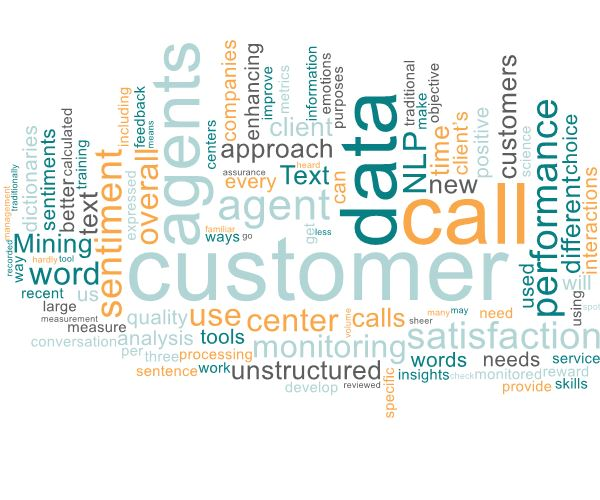“This call may be monitored or recorded for quality assurance purposes.” How many of us have heard those familiar words when we call a contact center? Call monitoring has traditionally been the “go to” performance measurement tool for contact centers, but the sheer volume of calls and agents means that less than 1% of calls can be reviewed. In other words, traditional monitoring is more of a “spot check” and hardly a comprehensive measure of overall agent performance and customer satisfaction.
With traditional monitoring providing little information, it’s hard to make informed business decisions for call center operations. Questions about the training that agents need, their level of performance, and the factors driving customer satisfaction are left murky. Fortunately, with recent advances in data science and machine learning, the days of limited call monitoring are coming to an end.
Data scientists are always looking for new ways to find insights from data that companies can use to better themselves. Right now, we live in the era of big data, and the amount of data we collect is growing every day. 80% of all currently-stored data is unstructured, and we need new processing techniques to better understand this data.
Text Mining examines large collections of written resources and provides methods for structuring text data. Natural Language Processing (NLP) is used to recognize similar concepts (e.g. sentiments and emotions) in text, even if they’ve been expressed in different ways throughout the text. These two branches of artificial intelligence work together to interpret human language in a way that is valuable for analysis, opening the door for companies to make use of their unstructured data reserves.
Tools like Text Mining and NLP are leading the charge for the analysis of huge volumes of unstructured data, and these technologies will get more sophisticated as they are refined overtime. Below is an example of how our data science leveraged this technology on a recent project to give us a new perspective on an age-old problem, customer satisfaction.
Objective
A large, national student lender engaged DecisivEdge to develop a novel approach assessing the effectiveness of their customer services by analyzing emotions expressed during customer interactions. The client wanted to use this information to help improve the performance of their call-center agents, who are pivotal in building better relationships with customers.
We decided to perform sentiment analysis using NLP to meet the client’s needs, elaborating the objective into three different parts:
- Reward agents’ efforts: Typical performance metrics overlook agent effort. We set out to develop a mechanism to identify agents involved in calls that have predominantly positive sentiments and award them appropriately.
- Provide agents feedback: Tone and word choice are the biggest contributors to and indicators of customer sentiment during a monitored call. We outlined an approach to automating the way in which agents receive feedback about their performance including word choice and tone.
- Align agent skills to customer needs: A lot of time and money is lost in call centers trying to connect customers with the most qualified agent to address a specific issue. We sought to automate this matching to also decrease overall customer wait time and improve customer satisfaction.
With these objectives in mind, we hoped to deliver a product that would enable the client to engage customers in a highly-personalized manner and reward their call-center agents when they had positive interactions with customers.
Approach
Our approach was to use off-the-shelf libraries (dictionaries) to calculate three different sentiment metrics for each sentence of each agent conversation. Each metric is based on the aggregation of emotional coefficients for every word in a sentence, given the sentiment categories detailed by the dictionaries.
A normalized sentiment score was calculated to capture the agent’s efficiency and word choice during a conversation. Additionally, eight different components of sentiment, including joy, sadness, and anticipation, were computed to measure overall call quality and assess agents’ skills. We then created positive and negative word clouds to highlight the most frequently used words and their implications, enabling agents to enhance overall customer satisfaction.
Our next goal is to create specific dictionaries that are tailored to the client’s customer service needs. This will increase the accuracy of sentiments that are calculated for customer interactions, improving first-call resolution and optimizing agent-training.
Summary
At the time of the request, the client was monitoring five calls per month per agent for call quality purposes. Using Text Mining and NLP, we built a pipeline that automatically monitors and rates every call, markedly enhancing the client’s ability to target their agents for educational opportunities and greatly enhancing the overall customer experience.
Our work with this client shows how Text Mining and NLP can be used to uncover analytic insights from massive quantities of unstructured text data. These tools are essential for companies attempting to utilize all their data to get a competitive edge. The continuing use and refinement of these tools will allow us to provide new solutions to challenges in a variety of industries, enhancing customer satisfaction while reducing cost and processing time.

